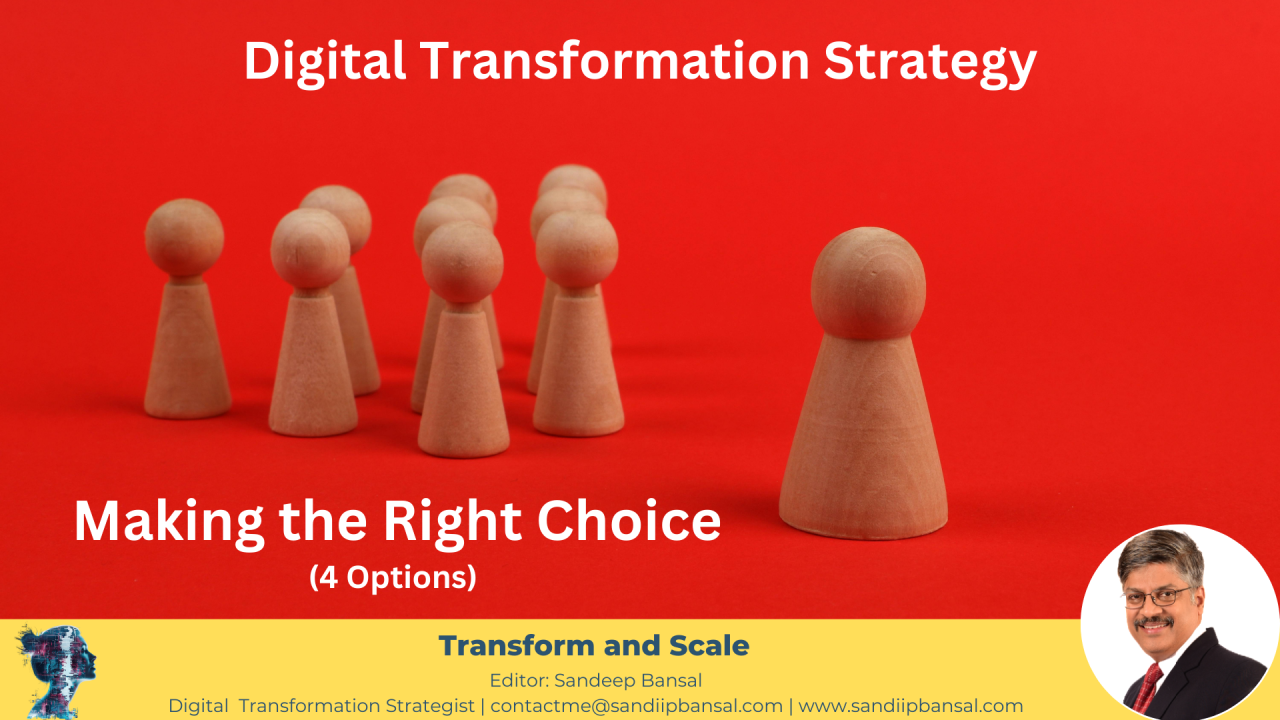The Transformation Imperative
73% of companies that successfully implement a digital transformation strategy report increased operational efficiency, while 65% experience improved customer satisfaction. Yet nearly 70% of digital transformation initiatives fail to reach their stated goals.
Is your organization ready to be on the right side of these statistics?
The path you choose matters.
An Illustrative Tale
When Pacific Northwest Healthcare decided to modernize its operations in 2023, CIO Maria Sanchez faced a critical decision. The sprawling hospital network with 12 facilities had accumulated dozens of disconnected systems over two decades.
“We had nurses logging into seven different systems during a single shift,” Sanchez recalled.
“Patient data existed in silos, and critical information wasn’t flowing to the right people at the right time.”
After evaluating their options, Pacific Northwest chose a platform approach that allowed them to integrate legacy systems while adding new capabilities. Within 18 months, they reduced administrative time by 34% and improved patient outcomes by 22% through better data coordination and automated workflows.
“The transformation wasn’t just about technology,” Sanchez explained. “It was about reimagining how we deliver care.”
Their story illustrates the importance of choosing the right digital transformation approach. Let’s explore the four primary strategies organizations can adopt:
The Four Appraoches to your Digital Transformation Strategy
1. One Solution Across the Organization
This approach involves implementing a single, comprehensive system across all departments and functions.
Pros:
- Creates a unified data environment with consistent information across departments
- Simplifies vendor management and reduces integration challenges
- Streamlines training with one system for all employees to learn
- Provides centralized security management
- Offers cost efficiencies through enterprise-wide licensing
Cons:
- May force departments to adapt to software that doesn’t address their specific needs
- Creates a single point of failure if the system experiences problems
- Often requires significant business process reengineering across the organization
- May lack specialized functionality needed by certain departments
- Can be expensive and disruptive to implement all at once
2. Best-of-Breed solutions
This strategy allows different departments to select specialized solutions optimized for their specific functions.
Pros:
- Enables each department to choose best-of-breed solutions for their unique requirements
- Allows for phased implementation with less organizational disruption
- Provides flexibility to adapt quickly to changing needs in specific areas
- Spreads investment costs over time rather than requiring a large upfront expenditure
- Reduces risk by not having all operations dependent on a single system
Cons:
- Creates data silos that require complex integration efforts
- Increases vendor management complexity
- May lead to inconsistent user experiences across the organization
- Often results in redundant data entry and maintenance
- Can increase total cost of ownership through multiple licensing agreements
3. Complete Customization
This approach involves building tailor-made solutions specifically designed for the organization’s unique processes and requirements.
Pros:
- Delivers precisely what the organization needs with no compromises
- Aligns perfectly with existing or desired business processes
- Provides competitive advantage through unique capabilities
- Eliminates paying for unnecessary features
- Allows complete control over future development and changes
Cons:
- Typically has the highest development costs and longest implementation timeline
- Creates dependency on development team for maintenance and updates
- Lacks the benefit of industry best practices built into commercial software
- Often struggles to keep pace with rapidly evolving technology standards
- Can be difficult to scale as the organization grows
4. Platform Approach
This strategy involves selecting a flexible platform that provides core capabilities while allowing extensions, integrations, and customizations.
Pros:
- Balances standardization with flexibility to address specific needs
- Provides a foundation for innovation through APIs and extension capabilities
- Enables gradual migration from legacy systems
- Typically offers ecosystem of pre-built integrations and add-ons
- Scales more easily as organizational needs evolve
- Reduces technical debt compared to fully custom solutions
Cons:
- May require compromise between ideal functionality and what the platform supports
- Often requires specialized platform expertise that can be expensive to acquire
- Can lead to complex governance challenges around customizations
- May involve higher licensing costs than point solutions
- Creates dependency on the platform vendor’s long-term viability and roadmap
Making the Right Choice
The optimal approach depends on several factors:
- Organizational size and complexity
- Industry-specific requirements
- Available budget and timeline
- In-house technical capabilities
- Legacy system landscape
- Future growth plans
Most successful organizations don’t adhere strictly to a single approach but blend elements strategically. For example, adopting a platform approach for core operations while allowing specialized solutions for departments with unique needs.
Take Action Now
Is your digital transformation strategy aligned with your organizational goals? The cost of inaction or choosing the wrong approach far exceeds the investment required to get it right.
Partner with an expert who can guide you through each step with proven methodologies and data-backed decisions. Don’t become another statistic in failed digital initiatives.
Ready to transform your organization?
Connect with me for a personalized consultation on your digital transformation journey:
My data-driven approach ensures your strategy is built on 25+ years of experience, not just intuition. Email at [email protected] or schedule a free 30-minute discovery session.

